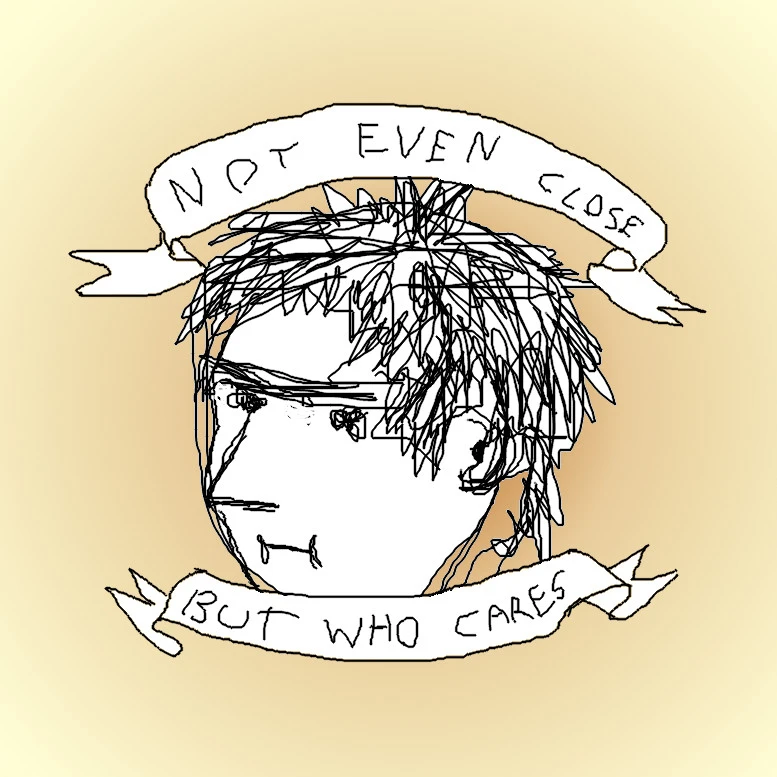When I run into other ships in space games I usually orient myself to be head on with them. Unless I’m trying to murder them, then I try to go wherever their guns aren’t. Maybe Star Trek just skips showing that part.
Can’t tell if this comic just doesn’t get it or put zero thought into it. And there is several examples throughout the various series where two ships don’t align to each other.
There are several reasons why the ships would always face each other, from common courtesy to defensive posturing.
When two ships face each other its like an nonverbal way of saying “we see you” or “you have our attention”. Orientation also plays apart in this. Of course there is no real reason to orient so both ships face “up” thanks to artificial gravity, but it’s also something that could be seen as polite and etiquette as getting on the same level as the other meeting them half way.
For defensive purposes, it also makes sense to nose towards a potential threat or adversary as within star trek the shields are strongest at the front (thanks to deflectors and navigational shielding) as well as the best/most accurate sensors to get a good reading. Additionally the forward arc of the ship will likely have the most overlapping weapon arcs, especially for ships like klingon bird of preys with fixed disruptor cannons facing forwards. This posture also tends to keep primary engineering, where the reactor/warp core is situated, obscured and defended, so if the ship wants to make a swift retreat their primary means of doing so is less likely to be damaged or disabled, and if you engage an FTL retreat towards a foes rear that foe needs to turn about and reorient themsevles to give chase, giving more time for the retreating party to take evasive action and avoid further intercepts.
Also, when playing space games, I automatically roll to align my ship’s up vector with the ships I encounter, without thinking about it. So I guess human nature plays a role too.
Idk, most navigation would be along or close to the ecliptic plane of the system, wouldn’t it
If you are going to and from points within a solar system, probably but not necessarily. Every transfer made between gravitational influences increases the chance that you will enter at an angle to the equatorial plane, especially if the two influences are not coplanar traveling between solar systems would likely have you entering at a significant angle. Furthermore, approaching a ship at a low velocity means slowing down as you approach them, so even if you do approach coplanar, it would be engines first and not nose first (unless star trek vessels have an ability to reverse their propulsors? I don’t know if that’s ever been shown aside from by approaching things nose first). The expanse showed this aspect of space interaction well with the flip and burn maneuvers
Starfleet ships basically maneuver like they’re weightless
massless?, which, mathematically, they probably are. Inertial Dampeners are mostly mentioned in reference to stopping Worf from smashing into all the science stations every time the ship accelerates, but if inertia isn’t affecting the ship, they can basically do whatever they want. Even a tiny amount of thrust would be enough to put them in reverse from Full Impulse. Add to this that the ships aren’t held together by their superstructures, but by their Structural Integrity Fields, and really, a Starfleet vessel could be constructed in basically any shape. They just look like they have a front and an up because humans like it that waybetween solar systems
FYI, there is only one solar system in the universe.
Source:
There are many planetary systems like ours in the universe, with planets orbiting a host star. Our planetary system is called “the solar system” because we use the word “solar” to describe things related to our star, after the Latin word for Sun, “solis.” — NASA
I always thought that it was the computer adjusting the view for the crew. I mean its not a window its a screen.
I’d like to think that it is an unspoken rule among all spacefaring people, regardless of their planetary origin or biological design, to automatically reorient their ships to match the “up” direction of any other ship they are approaching.
It makes sense since (effectively) all spacefaring peoples started on a planet with gravity and well defined “up” directions. You wouldn’t interact with anyone in gravity while upside down, so as a courtesy you’d always want to be facing “up” for both your sake’s.
Technically, this only needs to be the practice of Starfleet (or even just human) navigators in order to account for 99% of what we see in Star Trek. Maybe it’s our guys who are doing all the careful orienting, and the alien of the week just comes in from whatever angle they want.
There is direction in space. Space is not a formless void there is order and structure to the universe.
The solar system is shaped like a disk. Most planets orbit and revolve to the same axis as the solar system.
When a star trek ship is seen in orbit, like the opening to TOS it is usually shown orbiting with the up of the ship facing the north of the planet, making a left turn with the planet off the port side.
Having a consistent orientation, like up=north would make sense for navigating a solar system. Federation ships in orbit are always shown rotating to face the direction of travel while in orbit. That’s not at all needed to remain in orbit, but having consistent orientation seems important to the federation.
Clearly transporters can’t compensate for relative orientation so its universal courtesy to align your ships so guests don’t transport in upside down.
Any ship traveling towards another ship would have its nose pointed towards it.
If both ships travel towards each other, their noses would be aligned, but their roll would likely be different.
That’s a bit different from what’s being shown in the comic where ships seem to have any orientation, no matter the context.
As for a galactic up/down, the galactic disc would be the obvious reference. That still leaves a 50/50 chance that two civilizations would choose the same direction as up.
Realistically (i.e., not in Star Trek), a ship traveling toward something will have its engine cone pointed towards it as it decelerates for rendezvous.






